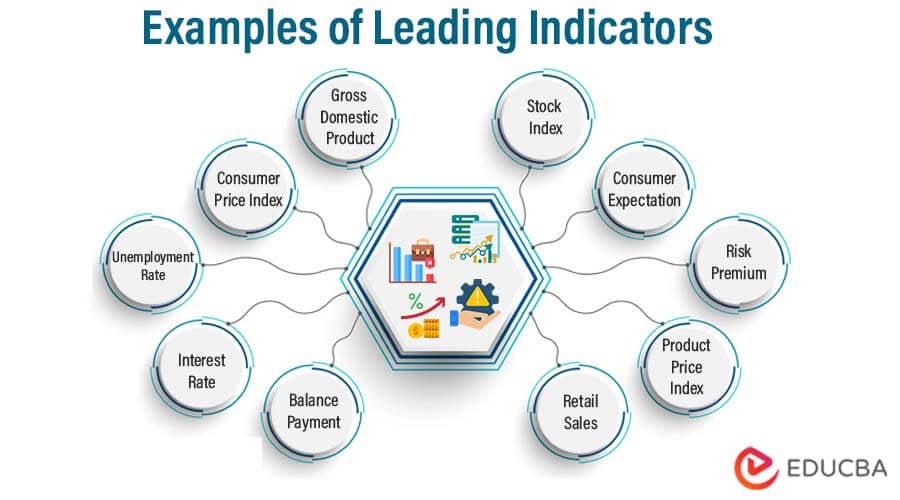What Are Leading Indicators in the Stock Market?

Imagine you're a captain navigating a ship through stormy seas. You wouldn't rely solely on the current weather; you'd also look at the horizon for signs of approaching storms or clear skies. In the world of investing, leading indicators in the stock market serve a similar purpose. They help you anticipate future market movements, providing crucial insights for economic forecasting and market analysis. But what exactly are these indicators, and how can you use them to your advantage?
Understanding Leading Indicators
Leading indicators are stock market indicators that provide signals about future economic trends. Unlike lagging indicators, which confirm past trends, leading indicators help you stay ahead of the curve. Think of them as the weather vane on a ship, pointing in the direction the wind is blowing before it hits your sails.
Types of Leading Indicators
There are various types of leading indicators, each offering unique insights into the market's future direction. Some of the most commonly used leading indicators include:
- Economic Indicators: These include metrics like the Purchasing Managers' Index (PMI), which measures the health of the manufacturing sector, and the Consumer Confidence Index, which gauges consumer spending intentions.
- Market Sentiment Indicators: These indicators, such as the Volatility Index (VIX), reflect investor sentiment and can signal potential market shifts.
- Technical Indicators: Tools like moving averages, Relative Strength Index (RSI), and Bollinger Bands help identify trends and potential reversal points in stock prices.
How to Use Leading Indicators for Financial Predictions
Using leading indicators effectively requires a combination of art and science. Here’s how you can incorporate them into your investment tools and strategies:
1. Identify Key Indicators
Start by identifying the leading indicators that are most relevant to your investment goals and the sectors you're interested in. For example, if you're investing in technology stocks, you might focus on indicators that reflect consumer spending on tech products.
2. Monitor Trends
Regularly monitor these indicators to spot trends early. For instance, a rising PMI might suggest that the manufacturing sector is gaining momentum, which could be a positive sign for industrial stocks. Tools like the Investopedia Economic Indicators Guide can help you stay updated on key metrics.
3. Combine with Other Analysis
Don’t rely on leading indicators alone. Combine them with other forms of market analysis, such as fundamental analysis and technical analysis, to get a more comprehensive view. For example, if a leading indicator suggests a bullish trend, but technical analysis shows overbought conditions, you might want to proceed with caution.
The Role of Leading Indicators in Economic Forecasting
Leading indicators play a pivotal role in economic forecasting. They help economists and investors predict economic cycles, identify potential recessions, and plan accordingly. For instance, a declining Consumer Confidence Index might signal an upcoming economic downturn, allowing you to adjust your portfolio to mitigate risks.
To get a deeper understanding of how leading indicators influence economic forecasting, you can explore resources like the Federal Reserve's Economic Indicators. This site provides a wealth of data and insights into various economic indicators.
Real-World Examples of Leading Indicators
Let’s look at a few real-world examples to see leading indicators in action:
Example 1: The Housing Market
In the housing market, building permits are a leading indicator. An increase in building permits often precedes a rise in housing starts and home sales, providing a forward-looking view of the housing market's health. If you’re investing in homebuilding stocks, keeping an eye on building permits can give you a competitive edge.
Example 2: Consumer Spending
Consumer spending is a significant driver of economic growth. Indicators like retail sales and the Consumer Confidence Index can provide insights into future spending patterns. For example, if the Consumer Confidence Index is rising, it might indicate that consumers are more likely to spend, which could be good news for retail stocks.
Conclusion
Leading indicators are invaluable tools for anyone involved in stock market indicators and economic forecasting. They help you anticipate market movements, make informed investment decisions, and stay ahead of the curve. By understanding and utilizing these indicators, you can enhance your market analysis and improve your financial predictions.
So, are you ready to take your investment strategy to the next level? Start exploring leading indicators today and see how they can transform your approach to the stock market. Remember, the key to successful investing is not just about reacting to the present but anticipating the future.
FAQs
1. What are the most reliable leading indicators?
The reliability of leading indicators can vary, but some of the most trusted ones include the Purchasing Managers' Index (PMI), Consumer Confidence Index, and the Volatility Index (VIX). These indicators have a proven track record of providing insights into future economic trends.
2. How often should I monitor leading indicators?
The frequency of monitoring depends on your investment strategy and the specific indicators you’re using. For short-term traders, daily or weekly monitoring might be necessary, while long-term investors might check monthly or quarterly.
3. Can leading indicators be wrong?
Yes, leading indicators can sometimes be wrong. They provide probabilities, not certainties. It’s essential to use them in conjunction with other forms of analysis to get a more accurate picture.
4. Are leading indicators useful for all types of investments?
Leading indicators can be useful for various types of investments, but their relevance can vary. For example, they might be more critical for stocks and commodities than for bonds, which are often more influenced by interest rates and inflation.
5. Where can I find reliable data on leading indicators?
Reliable data on leading indicators can be found through financial news websites, government economic reports, and financial databases. Websites like the Federal Reserve, Bureau of Economic Analysis, and Bloomberg provide comprehensive and up-to-date information.
```
Belum ada Komentar untuk " What Are Leading Indicators in the Stock Market?"
Posting Komentar